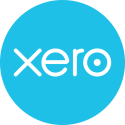What Is Cash Flow? The Important Differences Between Cash Flow and Your Financial Statements
By: Shay James

There are so many unique elements that allow a creative business to thrive. Things like outside-the-box concepts, striking visuals, and compelling stories can really wow your clients. But even the most creative of businesses can’t function if their finances aren’t in order.
Without a firm handle on drier topics like balance sheets, income statements, and cash flow, it’s hard to focus on the creativity you do best—especially as your business starts to grow. To make sure your business is built to last, it’s important to have at least a basic understanding of your financial statements and how to manage your cash flow.
Together we’ll review the importance of understanding what cash flow is, how it differs from income, and how your cash flow statement offers you insights that your other financial statements can’t.
What Is Cash Flow?
Cash flow is the net amount of cash (and its equivalents) moving in and out of your business over a period of time. The cash coming in (i.e., sales and revenue) is your inflow, and the cash leaving (i.e., expenses) is your outflow. The inflows and outflows are categorized in three ways:
Operating Cash Flow: This references the movement of money from your everyday operations. It’s the net amount generated from your business providing its goods and services minus operating expenses.
Investing Cash Flow: This is the cash your business generates (or loses) from its investment-related actions. This may include buying stocks, property, or selling physical assets (e.g., computers) owned by the business.
Financing Cash Flow: This refers to the movement of cash between your business and its creditors, investors, or owners. It’s the net amount generated to fund the business and may include activities like financing equity, debt, and dividends.
For many small businesses, operating cash flow is the primary concept of importance here. Investing and financing cash flow may be relevant to your business, but they also may not be.
How Is Cash Flow Different From Income?
It can be easy to confuse cash flow with income, but the two are not the same. By understanding the differences between cash flow and income, you’ll be able to uncover how your business is performing from multiple perspectives. Let’s start by reviewing income.
You can look at your business income from two perspectives: gross income and net income. Gross income refers to the revenue your business generates after subtracting your costs of goods sold (COGS). Net income, on the other hand, is the revenue left over after all expenses and taxes are subtracted. It’s the money you actually keep!
So how is cash flow different from income?
Let’s start by reviewing their timeframes. Cash flow shows you how money has been moving over a period of time. Income, however, is only showing you a present snapshot of what’s left after expenses. For this reason, you’ll want to review both your cash flow and your income when evaluating your business’ overall financial health.
Information about your cash flow will be useful in spotting inefficiencies in your business’ collections, investments, and spending. You’ll see where your money is being held up, getting eaten away by costs, and failing to provide a return on investment.
With this understanding, you can test new strategies and see how they function over time to increase your positive cash flow. Your income can then serve as the ultimate basis to know whether or not your strategies have worked.
What Financial Statements Reveal About Cash Flow and Income
Both your cash flow and income can be revealed by your financial statements, which provide an overview of your business’ activities and overall performance. These statements can be used by the government, accountants, and others to ensure legitimacy in your tax, financing, and investing activities.
They can also be used by you to understand the financial realities occurring in your business. Some of the most common financial statements you’ll need consist of a balance sheet, income statement (also known as a profit and loss statement), and cash flow statement.
Balance Sheet
Your balance sheet gives you an overview of your business’ assets and liabilities at a snapshot in time. Put another way, you’ll see what you own (i.e., assets) and what you owe (i.e., liabilities) as a business owner at a specific point in time.
Assets are categorized as current and long-term based on how long it would take to convert them into cash. Current assets (e.g., cash and cash equivalents) are ones that could be converted in a year or less. But long-term assets (e.g., land) are ones that may take a year or longer to convert to cash.
Your liabilities are differentiated in the same manner. That is, there are current liabilities and long-term liabilities. Current liabilities (e.g., wages payable) are due in a year or less. Long-term liabilities (e.g., business loans) are paid at any point after one year.
Income Statement
Income statements, or profit and loss statements, provide you with an overview of your business’ revenues, expenses, and net profit. And unlike balance sheets, your income statement will show data across a period of time rather than just a momentary snapshot.
Your revenue will be categorized as operational and non-operational. Operational revenue (e.g., client work) is the kind earned from your business's goods and services. Non-operational revenue (e.g., bank account interest) is what you’re bringing in from non-core activities.
Your expenses are organized by their primary or secondary nature. Primary activity expenses (e.g., COGS) are the ones incurred from your business’ normal, day-to-day operations. Secondary activity expenses (e.g., interest paid on loans) are ones brought on by non-core functions.
Cash Flow Statement
Cash flow statements provide an overview of how your business is running and where money is coming and going. The information gathered from this statement will reveal how well your business is able to pay its debt, finance its operations, and support its investments.
Cash flow statements will be organized in accordance with the three flow types mentioned above. That is, you’ll see the cash flow for operating, financing, and investing activities. Operating activities (e.g., accounts payable and receivable) will show cash changes in any actions involved in running your business or selling its goods and services.
Financing activities (e.g., issuing debt and paying debt) reveal cash transitioning between your business and any of its investors or creditors. Finally, your investing activities (e.g., buying or selling an asset) will make it clear where cash was going in support of the long-term development of your business.
Partner With Lamplight to Master Your Business Financials
At Lamplight Advisors, we offer a full suite of services to help our business owners stay on top of their finances. By providing outsourced CFO services, we help free up your time as a creative professional to put your energy where it’s given back. We’ll help you understand each one of your financial statements—and point out any problems you may not be aware of.
We’ll also help you spot opportunities for cash flow improvement, which can help your business run more efficiently, keep costs down, and grow more rapidly towards the vision you have in mind. To see if we can help you, click here to schedule a conversation today.






